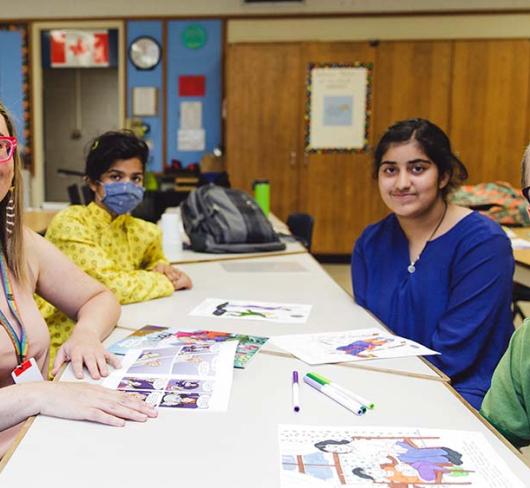Building a Classroom Community (New Teachers' Column)
“Education is a social process. Education is growth. Education is not a preparation for life; education islife itself.” — John Dewey
If you are a new teacher, you have just completed your first term in the classroom. Take a minute to look back at the beginning of the school year. Before classes started you probably spent a lot of time setting up your classroom, creating name tags and labels, getting ready the correct number of notebooks and Duo-Tangs, and more. However, that preparation only took you to the first day of school. It was when the names on your class list arrived as real people on that first morning that the classroom began to take shape. What you did from then on determined the character of your classroom community.
The importance of building a cohesive classroom community is one of the powerful themes that emerged when more than 2,500 teachers were asked to describe what contributes to their success in the classroom. What do they do that has the most impact? These teachers’ ideas are the basis for a new resource that ETFO is developing – The Heart and Art of Teaching & Learning. It will offer practical ideas and resources for beginning teachers – in fact, all teachers. Members told us it was crucial to remember this: what we teach is curriculum, but who we teach are students. Students come with their own personalities, interests, abilities, challenges, and backgrounds. The skilled teacher ensures that everyone, including him/herself, is involved in shaping what becomes a unique classroom community where everyone belongs.
Teachers may feel some tension between building an inclusive classroom culture and the pressure to get on with the curriculum. This is not an either/or proposition. When you build a learning-focused classroom culture where the thoughts and contributions of all students are valued you will actually create more time for teaching and spend less time managing students’ behaviour. The usual get-to-know-you games and fun first day activities serve to introduce everyone to each other, but they are only the beginning. You build a community in a classroom by providing regular opportunities for students to
- function in groups and teams
- participate in classroom meetings where decisions are made and problems are discussed
- learn co-operation by working collaboratively
- accept each others’ strengths and weaknesses.
This means that when you decide how to set up your room, you don’t make all the decisions ahead of time. After the students arrive, you ask them for input on how the space will function best. This gives them some shared ownership of their classroom environment. As well, don’t decorate the classroom with store-bought laminated posters. Post the students’ work and art. Within a few days they will see themselves as connected and part of the classroom.
What students remember about their time with you as their teacher is not the innovative way they learned long division or the unit on Early Civilizations, but who you were as a person, and how the classroom felt. Students who are part of a classroom community remember that experience and learn life-long lessons from it.

